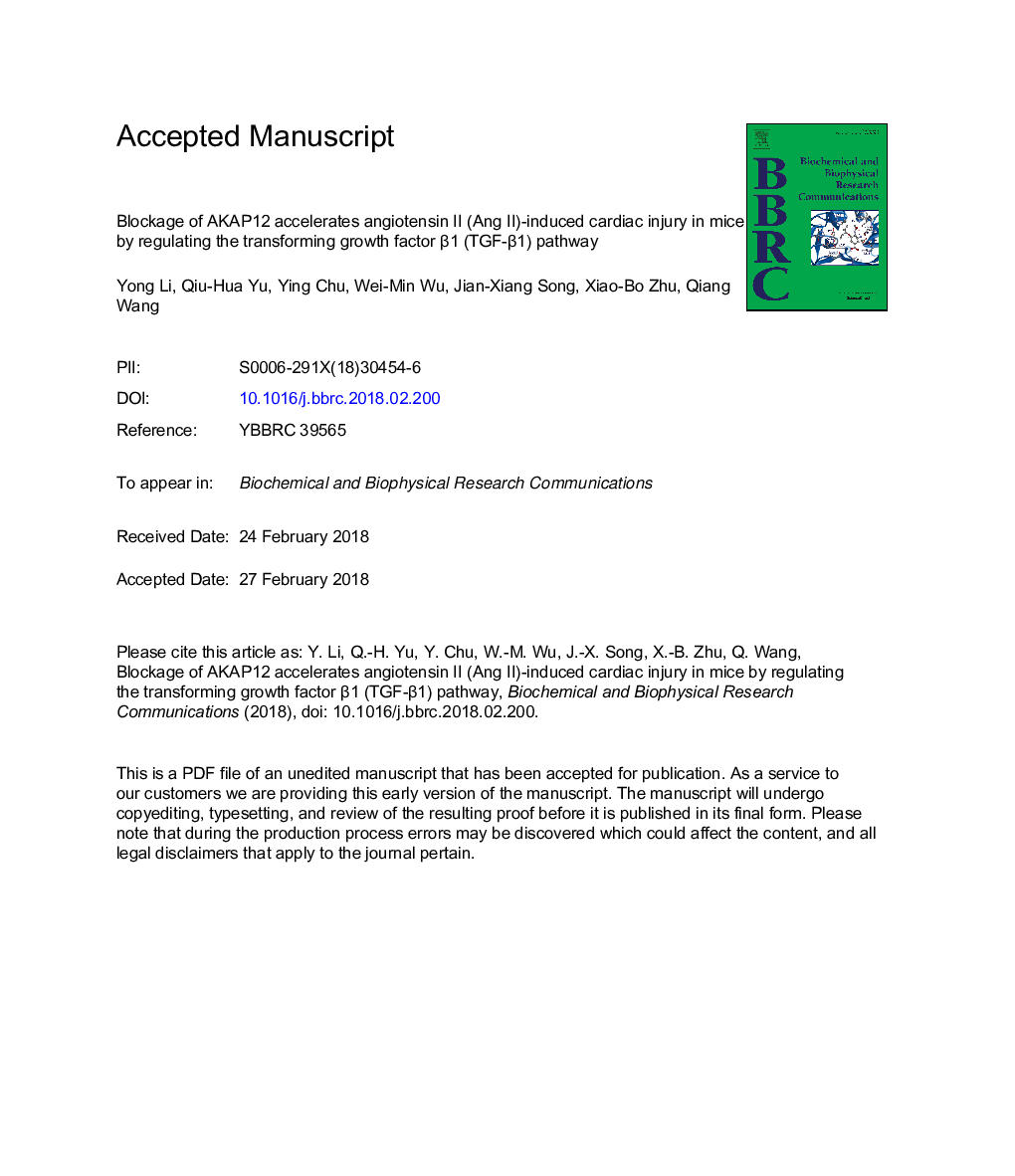| Article ID | Journal | Published Year | Pages | File Type |
|---|---|---|---|---|
| 8293083 | Biochemical and Biophysical Research Communications | 2018 | 28 Pages |
Abstract
Hypertension is a multifactorial chronic inflammatory disease that leads to cardiac remodeling. A-kinase anchor protein 12 (AKAP12) is a scaffolding protein that has multiple functions in various biological events, including the regulation of vessel integrity and differentiation of neural barriers in blood. However, the role of AKAP12 in angiotensin II (Ang II)-induced cardiac injury remains unclear. In the present study, Ang II infusion reduced AKAP12 expressions in the hearts of wild-type (WT) mice, and AKAP12 knockout (KO) enhanced the infiltration of inflammatory cells. In addition, AKAP12 deletion accelerated Ang II-induced cardiac histologic alterations and dysfunction. Further, AKAP12â/â aggravated heart failure by promoting the inflammation, oxidative stress, cellular apoptosis, and autophagy induced by Ang II. Furthermore, AKAP12 KO elevated Ang II-induced cardiac fibrosis, as indicated by the following: (1) Masson trichrome staining showed that Ang II infusion markedly increased fibrotic areas of the WT mouse heart, which was greatly accelerated in AKAP12â/â mice; (2) immunohistochemistry analysis showed increased expression of transforming growth factor β1 (TGF-β1) and α-smooth muscle actin (α-SMA) in the AKAP12â/â mouse heart; (3) reverse transcription-quantitative real-time polymerase chain reaction (RT-qPCR) analysis showed increased expression of fibrosis-related molecules in the AKAP12-deficient mouse heart; and (4) Western blot analysis indicated significantly higher upregulation of p-SMAD2/3 in the AKAP12â/â mouse heart. In vitro, AKAP12 knockdown in HL-1â¯cells was responsible for TGF-β1-induced inflammation, the generation of reactive oxygen species (ROS), apoptosis, autophagy, and fibrosis. Furthermore, overexpression of AKAP12 reduced fibrosis triggered by TGF-β1 in cells. Overall, our study suggests that fibrosis induced by Ang II may be alleviated by AKAP12 expression through inactivation of the TGF-β1 pathway.
Keywords
Related Topics
Life Sciences
Biochemistry, Genetics and Molecular Biology
Biochemistry
Authors
Yong Li, Qiu-Hua Yu, Ying Chu, Wei-Min Wu, Jian-Xiang Song, Xiao-Bo Zhu, Qiang Wang,
